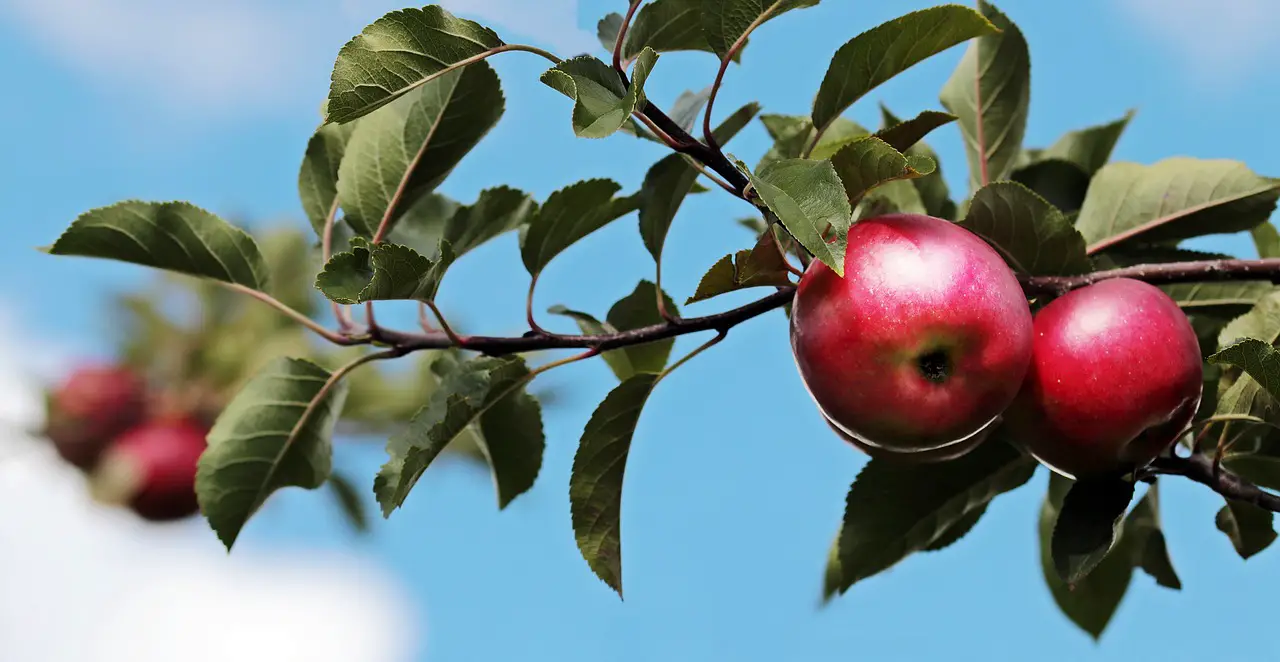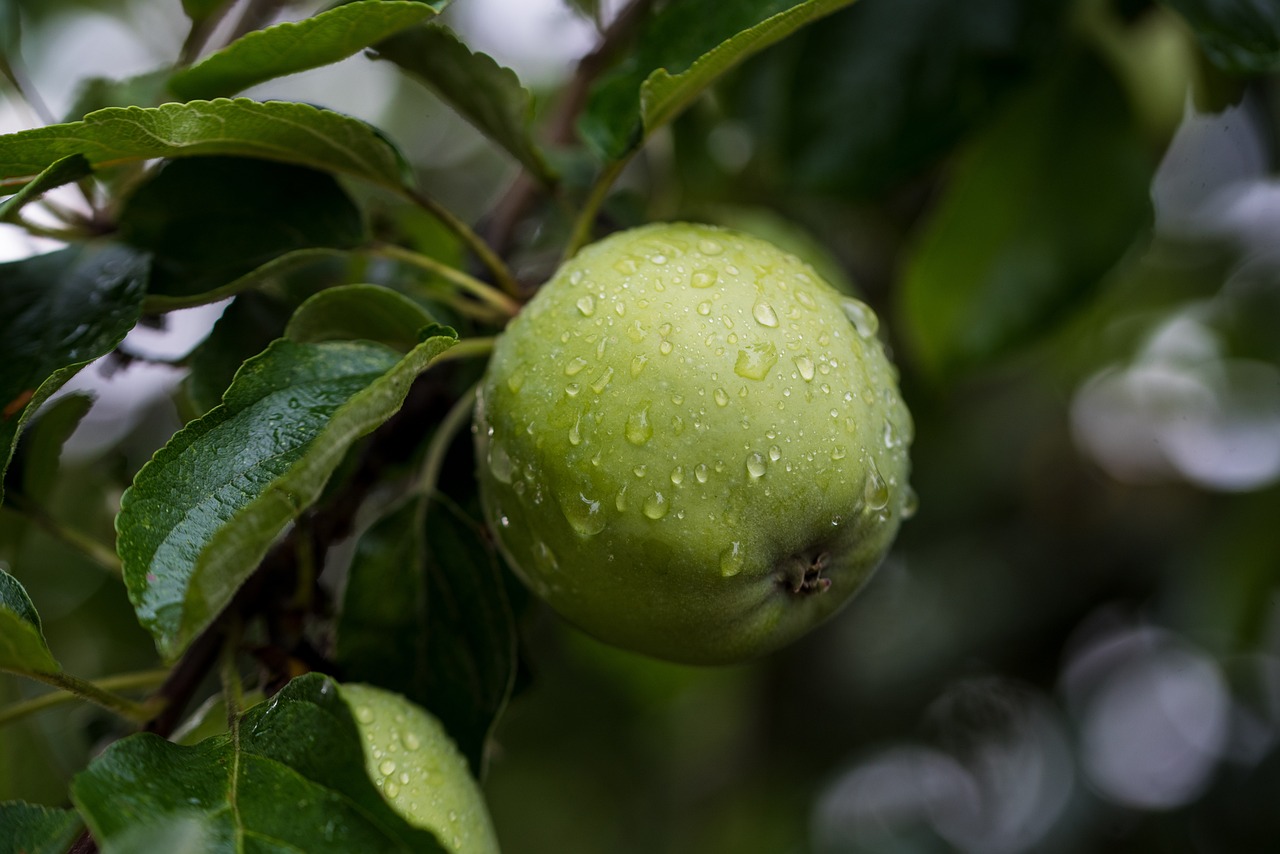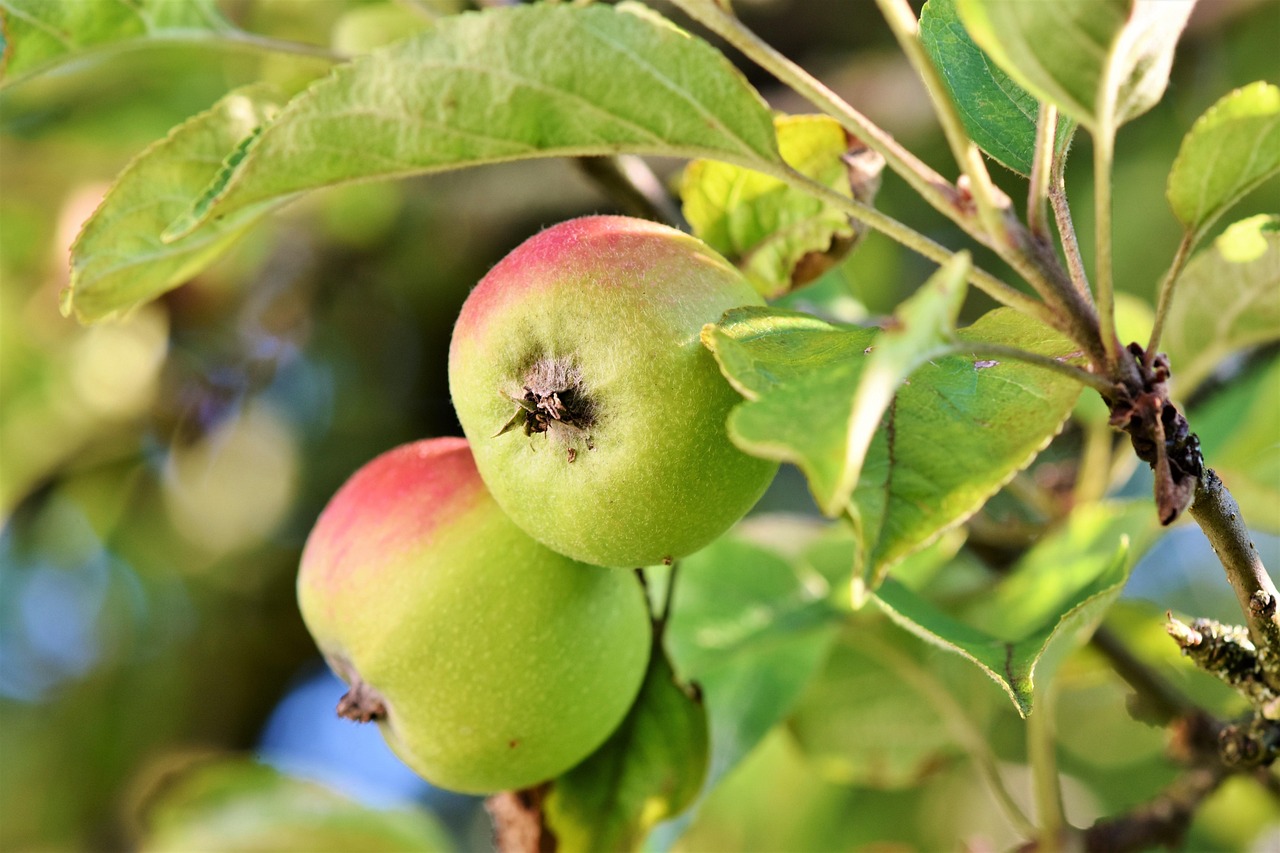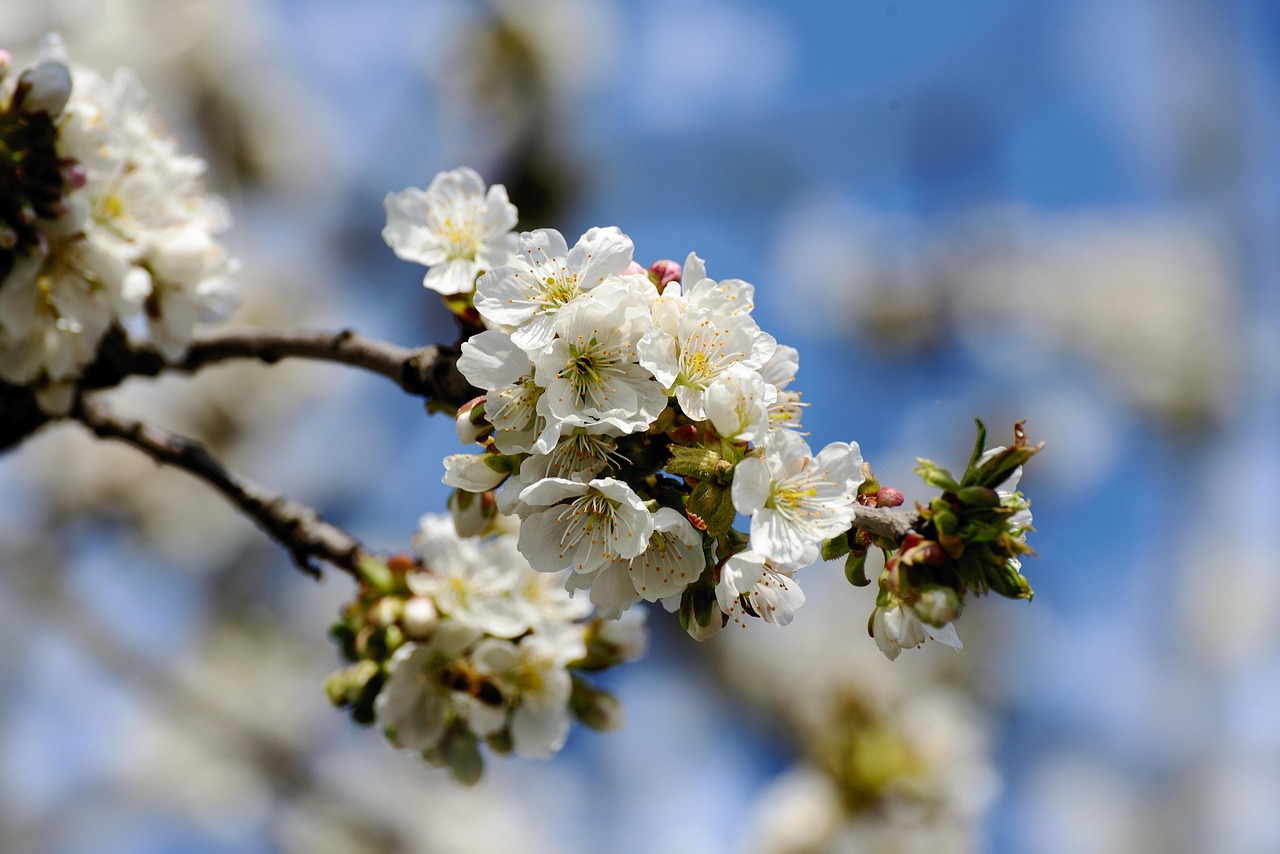Apple trees typically grow at a rate of about 1 to 2 feet per year after reaching the seedling stage. This growth rate can vary based on factors such as the apple variety, soil quality, and care provided.
Understanding Apple Tree Growth from Seedling Stage
Apple trees are a popular choice for home gardeners and commercial orchards alike. Understanding their growth patterns is essential for successful cultivation. Starting from the seedling stage, apple trees go through various phases of development that significantly influence their overall growth rate and health.

When planted as seedlings, apple trees require specific care and conditions to thrive. The early stages of growth are critical as they set the foundation for future development. Factors such as sunlight, water, soil quality, and temperature all play a vital role in determining how quickly a seedling matures into a robust tree.
During the seedling stage, apple trees typically exhibit several distinct growth phases. Each phase contributes to the tree’s structure and ability to bear fruit later on. Below is a brief overview of these stages:
| Growth Phase | Duration | Description |
|---|---|---|
| Germination | 1-3 weeks | The seed absorbs water and begins to sprout. |
| Seedling | 6 months – 1 year | Initial growth of roots and leaves; crucial for stability. |
| Young Tree | 1-3 years | Increased height and branching; preparation for fruiting. |
| Mature Tree | 4+ years | Full height achieved; begins producing fruit. |
The germination phase is the first step in the life of an apple tree. This phase can last from one week to three weeks, depending on various factors such as temperature and moisture levels. Once the seed germinates, it enters the seedling phase, which lasts from six months to a year. During this time, the seedling develops its first leaves and roots.

Proper care during the seedling stage is crucial. The seedlings should be planted in well-draining soil with adequate nutrients. Regular watering is essential, but overwatering can lead to root rot. A good balance is necessary to support healthy growth.
As the seedlings grow into young trees, they usually reach a height of about 2 to 3 feet within their first year. Young trees start developing branches, which are important for future fruit production. This phase can last from one to three years, and during this time, it is essential to prune the trees appropriately to promote proper shape and strength.
Environmental conditions also play a significant role in the growth rate of apple trees. For example, trees planted in full sunlight generally grow faster than those in shaded areas. Additionally, soil quality affects nutrient absorption and root development. Sandy loam soils tend to be ideal for apple trees, providing both drainage and nutrients.

Pests and diseases can hinder growth significantly if not managed properly. Common pests include aphids and spider mites, while diseases such as apple scab can affect the leaves and overall health of the tree. Regular monitoring and appropriate interventions are vital to ensure healthy growth.
Temperature is another critical factor influencing growth rates. Apple trees thrive in temperate climates with cold winters and warm summers. In regions where temperatures do not fall below freezing, trees may struggle to enter dormancy, affecting their growth cycle.
In summary, understanding the growth rate of apple trees from the seedling stage requires knowledge of various factors that influence their development. By providing optimal conditions and care during these early stages, gardeners can enhance their chances of cultivating healthy, productive apple trees.
Factors Affecting Apple Tree Growth Rate
The growth rate of apple trees from the seedling stage is influenced by several key factors. Understanding these factors can help gardeners optimize their cultivation strategies. Below, we explore the most significant elements that affect growth rates:

Soil Quality
Soil quality is one of the most critical factors influencing the growth of apple trees. The right soil can provide necessary nutrients and support healthy root development. Key aspects of soil quality include:
- pH Level: Apple trees prefer a soil pH between 6.0 and 7.0. Testing and adjusting the pH can help promote better nutrient availability.
- Nutrient Content: Essential nutrients, such as nitrogen, phosphorus, and potassium, are vital for growth. Conducting a soil test can determine nutrient levels.
- Drainage: Well-draining soil prevents waterlogging, which can damage roots. Sandy loam soils are ideal for apple trees due to their balance of drainage and nutrient retention.
Watering Practices
Consistent and appropriate watering is crucial for the growth of apple trees. Watering practices should consider the following:
- Frequency: Young seedlings require regular watering, especially during dry periods. A general rule is to water deeply once a week rather than shallowly every day.
- Method: Drip irrigation systems can help deliver water directly to the roots, reducing evaporation. Hand watering should aim to saturate the root zone without oversaturating the soil.
- Signs of Stress: Wilting leaves or yellowing foliage may indicate inadequate water supply or root problems. Monitoring these signs can help adjust watering schedules.
Sunlight Exposure
Apple trees require plenty of sunlight to thrive. The amount of sunlight affects photosynthesis, which is essential for growth. Consider these points:
- Optimal Sunlight: Apple trees typically need at least six hours of direct sunlight daily for optimal growth.
- Shading Issues: Nearby structures or taller plants may shade young apple trees, stunting their growth. Ensuring proper spacing and placement can mitigate this issue.
- Sunburn Protection: Young trees can suffer from sunburn on exposed bark. Wrapping trunks with protective materials can help shield them from harsh sunlight.
Pest and Disease Management
Pests and diseases pose significant threats to the healthy growth of apple trees. Effective management strategies are essential for preventing infestations and infections.
Common Pests
Several pests are known to affect apple trees, each requiring specific management techniques:
- Aphids: These small insects can suck sap from leaves, leading to wilting. Regular inspection and insecticidal soap can help control their population.
- Spider Mites: These tiny pests thrive in dry conditions and can cause leaf discoloration. Increasing humidity around the tree can help deter them.
- Coddling Moths: This pest targets developing fruits, causing them to drop prematurely. Using pheromone traps can help monitor and reduce their numbers.
Common Diseases
Diseases can also hinder growth and productivity. Here are some common diseases affecting apple trees:
- Apple Scab: This fungal disease leads to dark spots on leaves and fruit. Ensuring good air circulation and applying fungicides can help manage it.
- Powdery Mildew: Characterized by a white powdery substance on leaves, this disease thrives in warm, dry conditions. Treatment involves proper pruning and fungicide application.
- Crown Rot: Often caused by overwatering, this disease affects the roots near the soil line. Ensuring proper drainage is key to prevention.
The Role of Temperature
Temperature significantly impacts the growth rate and overall health of apple trees. Both extreme cold and heat can have detrimental effects.
Cold Temperatures
Apple trees require a period of dormancy during winter months. This cold period is essential for healthy growth in spring:
- Dormancy Requirements: Many apple varieties need a certain number of chilling hours below 45°F to break dormancy and produce fruit.
- Effects of Mild Winters: In areas with warmer winters, trees may not enter dormancy properly, leading to reduced yields.
Hot Temperatures
Excessive heat can also stress apple trees:
- Heat Stress Symptoms: Leaves may curl or drop off if temperatures exceed the tree’s tolerance levels.
- Irrigation Needs: During hot spells, increased watering may be necessary to maintain moisture levels in the soil.
By understanding these factors affecting apple tree growth rates, gardeners can take proactive measures to ensure their trees grow strong and healthy from the seedling stage onward.
Choosing the Right Apple Tree Variety
The growth rate of apple trees can vary significantly based on the variety chosen for planting. Each type of apple tree has unique characteristics that affect its growth, fruiting, and overall hardiness. Understanding these differences can help gardeners select the most suitable variety for their climate and growing conditions.
Popular Apple Tree Varieties
Here are some common apple tree varieties, along with their growth characteristics:
| Variety | Growth Rate | Fruit Characteristics |
|---|---|---|
| Granny Smith | Moderate (1-2 feet/year) | Tart, green apples; excellent for cooking. |
| Red Delicious | Fast (2-3 feet/year) | Sweet, red apples; popular for eating fresh. |
| Fuji | Moderate (1-2 feet/year) | Crunchy, sweet apples; good for fresh eating and baking. |
| Honeycrisp | Moderate to Fast (1-3 feet/year) | Sweet, juicy apples; very popular among consumers. |
When selecting a variety, consider not only the growth rate but also the intended use of the fruit. Some apples are better for eating fresh, while others excel in cooking or cider production.
Rootstock Influence on Growth
The rootstock used for grafting apple trees also plays a significant role in their growth rate and overall size. Rootstocks can be categorized into three main types:
- Dwarf Rootstocks: These produce smaller trees that typically grow to about 6 to 10 feet tall. They are easier to manage and harvest, making them ideal for home gardens.
- Semi-Dwarf Rootstocks: These trees reach heights of 10 to 15 feet. They provide a balance between size and fruit production, suitable for small orchards.
- Standard Rootstocks: Standard trees can grow over 15 feet tall. They have a longer lifespan and may produce fruit at a larger scale, but they require more space and maintenance.
The choice of rootstock can significantly affect not just the height but also the vigor and yield of the tree. Gardeners should consider their available space and maintenance preferences when selecting rootstocks.
Best Practices for Encouraging Growth
To enhance the growth rate of apple trees from the seedling stage onward, certain best practices should be followed. These practices help create an optimal environment for healthy development.
Pruning Techniques
Regular pruning is essential for maintaining the shape and health of apple trees. Proper pruning encourages new growth and improves air circulation:
- Timing: Prune during late winter or early spring before new growth begins for best results.
- Techniques: Remove dead or diseased branches and thin out crowded areas to promote light penetration.
- Training: Train young trees to develop a strong central leader and an open canopy to improve structure.
Nutrient Management
Providing adequate nutrients is crucial for the growth of apple trees. Here are some tips for effective nutrient management:
- Fertilization: Apply a balanced fertilizer in early spring to support budding and flower development. Avoid excessive nitrogen, which can lead to lush foliage but reduced fruiting.
- Organic Matter: Incorporate compost or well-rotted manure into the soil to improve soil structure and provide essential nutrients over time.
- Micronutrients: Monitor for deficiencies in micronutrients such as iron and magnesium, which can affect leaf color and overall health.
The Importance of Pollination
Pollination is a vital process for apple trees, affecting their ability to produce fruit. Most apple varieties require cross-pollination from another variety to set fruit properly.
Pollinator Variety Selection
Selecting varieties that bloom at the same time is essential for effective pollination. Here are some key points to consider:
- Bloom Time: Choose varieties with overlapping bloom times to ensure that pollen transfer occurs during flowering periods.
- Pollinator Trees: Planting at least two different apple varieties within proximity can enhance pollination rates and fruit set.
Encouraging pollinators like bees in the garden can also help improve pollination rates. Providing habitats and avoiding pesticides during blooming can support these beneficial insects.
Common Challenges and Their Solutions
While growing apple trees from the seedling stage can be rewarding, several challenges may arise. Understanding these challenges and their solutions can help ensure successful cultivation.
Pests and Diseases
As previously mentioned, pests and diseases can significantly affect the health and growth of apple trees. Here are some common challenges and potential solutions:
- Preventive Measures: Implementing preventative measures, such as maintaining good hygiene in the orchard, can reduce pest populations. Regularly cleaning fallen fruit and debris is essential.
- Integrated Pest Management (IPM): This approach combines biological, cultural, and chemical methods to manage pests effectively while minimizing environmental impact.
- Monitoring: Regularly inspecting trees for signs of pests or diseases can help catch issues early. Early intervention is often more effective and less damaging to the ecosystem.
Environmental Stress
Environmental stressors, such as drought, extreme temperatures, or poor soil conditions, can hinder growth. Here are ways to mitigate these issues:
- Irrigation Systems: Installing drip irrigation or soaker hoses can provide consistent moisture during dry periods while minimizing water waste.
- Mulching: Applying organic mulch around the base of trees helps retain soil moisture, regulate temperature, and suppress weeds.
- Soil Amendments: Regularly testing soil and amending it with organic matter can improve nutrient availability and soil structure, enhancing overall tree health.
Cultivation Strategies for Optimal Growth
Adopting effective cultivation strategies can significantly enhance the growth rate of apple trees from the seedling stage. Below are some recommended practices:
Regular Monitoring and Maintenance
Consistent monitoring of tree health is vital. Here are key practices to adopt:
- Growth Tracking: Keep records of growth rates, blooming times, and fruit set to identify patterns that may indicate underlying issues.
- Pest and Disease Records: Document any sightings of pests or disease symptoms to help develop a management plan for future seasons.
- Seasonal Adjustments: Be prepared to adjust care routines based on weather conditions and tree performance throughout the growing seasons.
Education and Community Support
Engaging with local gardening communities and resources can provide valuable insights. Here are ways to seek support:
- Workshops and Classes: Attend local workshops on apple tree care to learn about the latest techniques and best practices.
- Online Forums: Join online gardening forums or social media groups focused on apple cultivation for advice and shared experiences from fellow gardeners.
- Extension Services: Utilize local agricultural extension services for access to research-based information on pest management and tree care.
Final Thoughts
The journey of growing apple trees from the seedling stage to a fruitful harvest is filled with learning opportunities. By understanding the factors that influence growth rates, selecting suitable varieties, employing effective cultivation techniques, and addressing challenges proactively, gardeners can cultivate healthy and productive apple trees.
Ultimately, patience and dedication are key. Apple trees may take several years to mature fully, but the rewards of homegrown apples are worth the effort. Whether you are a beginner or an experienced gardener, fostering a healthy environment for apple trees will lead to flourishing growth and bountiful harvests for years to come.
With knowledge of pest management, nutrient requirements, and environmental considerations, you can become a successful apple tree grower. Enjoy the process of nurturing your trees as they grow, adapt, and bear fruit in your garden.
